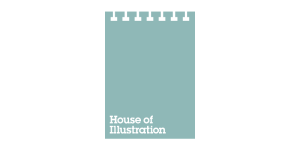
Illustration to William Shirley’s ‘Edward the Black Prince’, scene 3, from Bell’s ‘British Theatre’ series; sheet trimmed and pasted within platemark in imitation of an india proof. 1792.
British Museum.
Museum no.
1875,0710.3387
http://www.britishmuseum.org/ research/collection_online/ collection_object_details.aspx? objectId=3041464&partId= 1&searchText=edward+the +black+prince&page=1 Used under a Creative Commons License http://creativecommons.org/ licenses/by-nc-sa/4.0/
This month, Anne Musset (PhD Candidate, History of Art, University of Warwick/Université Paris-Diderot) discusses an illustration to Bell’s British Theatre:
‘This image, engraved by Joseph Collyer after William Hamilton, is an illustration of William Shirley’s historical tragedy Edward the Black Prince; or, the Battle of Poictiers. It is taken from the 1791 edition of the play in the hugely popular series Bell’s British Theatre. Shirley’s play, “attempted after the Manner of Shakespear”, was first performed in 1750 and remained popular thanks to its combination of romance and heroic action.[1] It is based on the Battle of Poitiers (1356) and stages the Black Prince as a charismatic military leader and a tender friend. A second plot focuses on the tragic love between English knight Arnold and his French prisoner Mariana. The play afforded moments of heroism and of pathos, as well as opportunities for political parallelisms and medieval pageantry.
As an illustrator, Hamilton contributed to all the major literary and historical galleries of the period. In the 1780s and 1790s he realised several vignettes and portraits for Bell’s British Theatre. The passage illustrated takes place in Act III, when Mariana and Arnold have defected to the French camp, but Arnold feels remorse at betraying his country and the Prince’s friendship. He resolves to leave Mariana and return to the English camp. Mariana, whose violent passion constantly places her on the brink of madness, attempts to prevent his departure.
The costume in Hamilton’s scene evinces a combination of styles. Mariana’s dress is rather Baroque in style, but the high waists of the ladies’ dresses correspond to the fashion of the 1790s. The slashed sleeves and ruffled collar of Mariana’s attendant are historicising details commonly found in eighteenth-century theatrical costuming to signify an earlier historical period, from the Middle Ages to the seventeenth century.[2] For Hamilton, slashed sleeves seem to be a prerequisite to the illustration of the past. Arnold’s costume is inspired by seventeenth-century rather than medieval armour. By the end of the eighteenth century, few works on costume and armour had been published in Britain, and historical painters often sought inspiration from the armouries in the Tower of London – but none of the exhibits were older than the sixteenth century. What the image achieves is an evocation of the past as the background for the sentimental drama, rather than an archaeological reconstruction of the middle ages.
The function of referring to the fourteenth century with more precision is devoted to the image’s frame: there we find direct allusions to France and England, in the form of an elaborate display of arms, armour and standards. The display has both a decorative and a narrative function. It features the banners of England and France along with a pike, a sword and a pair of gauntlets, on either side of a helmet crowned with the three ostrich feathers of the Prince of Wales and bearing his motto “Ich dien”. The frame firmly reinforces the political drama unfolding in the background, suggesting that the situation depicted originates in the political choices of monarchs, or conversely, that individual, private decisions can affect events in the political sphere. The hangings in the picture seem to merge with the armorial display of the frame, which reinforces the connection between the sentimental and the historical plots. The gauntlets on either side of the helmet appear to be holding the picture, as if presenting the image to the viewer, or exerting control over the scene. The slightly ominous gauntlets, shadow under the helmet and agitated clouds (which seem a continuation of the French standard) suggest that war will get the upper hand over the lovers.
An illustration of the historical tragedy, the image also participated in the construction of the genre of historical romance, balancing theatrical references and antiquarianism in a pathetic farewell scene. While the play claims to be staging historical fact, the illustration focuses on romance. At the same time, it retains a strong connection to the battle and the figure of the Prince of Wales thanks to its background and its highly decorative frame. Visually, the scene is reminiscent of other famous farewell scenes, such as Hector parting from Andromache or Regulus returning to Carthage – both subjects that had been regularly depicted by European artists in the second half of the century. Through such associations, the book illustration takes on aspects of history painting. As a consequence, Mariana, Arnold and British history are aligned with ancient Greek and Roman history, just as Shirley was aiming to align his own tragedy with the works of Shakespeare.’
Anne Musset
University of Warwick/Université Paris-Diderot
[1] See Jeffrey Kahan, Shakespeare Imitations, Parodies and Forgeries, 1710-1820 (Taylor & Francis, 2004), vol. 1.
[2] Diana De Marly, Costume on the Stage 1600-1940 (London: Batsford, 1982), pp.52-23.








